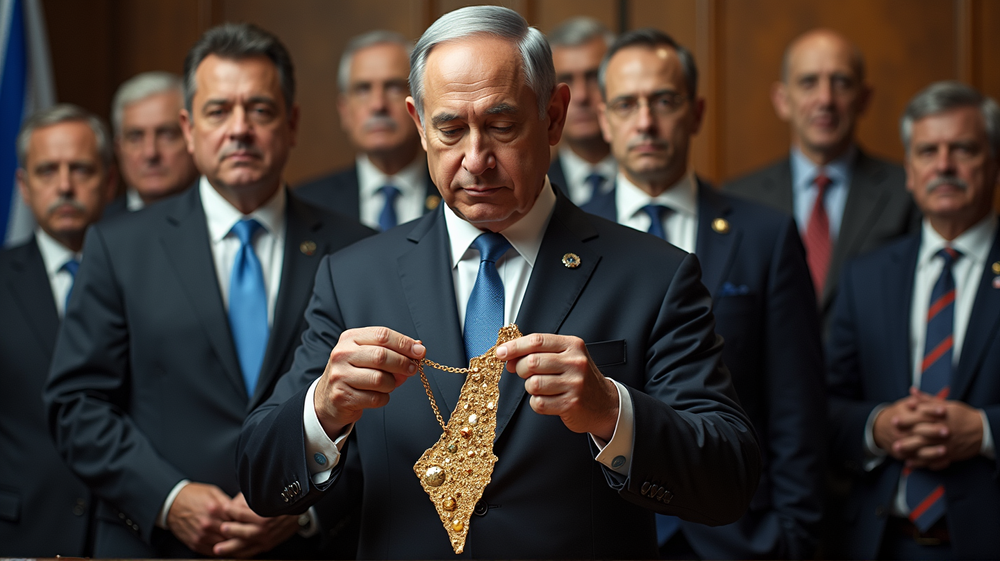A Gesture Gone Awry
In a situation that has drawn swift international attention, Israeli Prime Minister Benjamin Netanyahu recently found himself at the heart of diplomatic controversy. During an interview on Israel’s i24 channel, he was presented with a pendant featuring the outline of ‘Greater Israel’. This unexpected gift has riled neighboring countries Jordan and Egypt, as well as sparking criticism from France, illustrating the delicate balance of sentiment in a region steeped in historical complexities. This incident shines a light on the deep-seated tensions that can be inflamed with symbolic gestures. According to Haaretz, the piece of jewelry depicted a vision that extends beyond current borders, unsettling the diplomatic equilibrium.
Reaction from the Region and Beyond
The reaction from Jordan and Egypt was prompt and firm, raising their concerns about the implications of Netanyahu’s acceptance of such a symbol. This event reflects the precarious peace and underlying grievances that persist in Middle Eastern diplomacy. France also joined in the condemnation, signaling that the ripples of this gesture have reached European shores, emphasizing the nuanced interplay of international relations.
The Historical Significance of ‘Greater Israel’
The depiction of ‘Greater Israel’ on the pendant in question is not just a piece of jewelry—it is a contentious symbol that has historical roots and potential implications for territorial claims. For many in the region, it represents a controversial vision that contradicts the current geopolitical boundaries and agreements that strive for peace.
Navigating Diplomatic Waters
This incident is a reminder of the complexity inherent in Middle Eastern diplomacy, where symbols carry significant weight, and even small gestures can have wide-reaching implications. It underscores the responsibility of leadership figures and media to be mindful of the historical contexts and the potential for misunderstanding or conflict.
Forward-Looking Diplomacy
As this situation unfolds, it provides a platform for conversations about reconciliation and respect among nations with deep-rooted histories. Diplomacy is as much about the negotiation of symbolism as it is about political agreements, and leaders must navigate these waters with sensitivity and foresight.
The Broader Implications
Although this is a unique incident, it is a reflection of broader geopolitical challenges. It raises questions about how countries can foster relationships that transcend historical tensions and work towards a more stable future for the region. As stated in Haaretz, the significance of cultural and historical symbolism cannot be underestimated, requiring careful handling to avoid further strife.
In an era where gestures are constantly scrutinized under the international lens, this incident serves as a stark reminder of the power and responsibility that come with leadership and media representation in an interconnected world.












